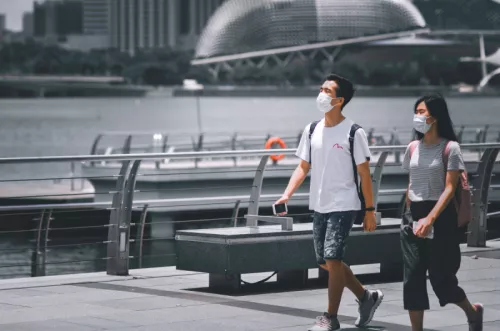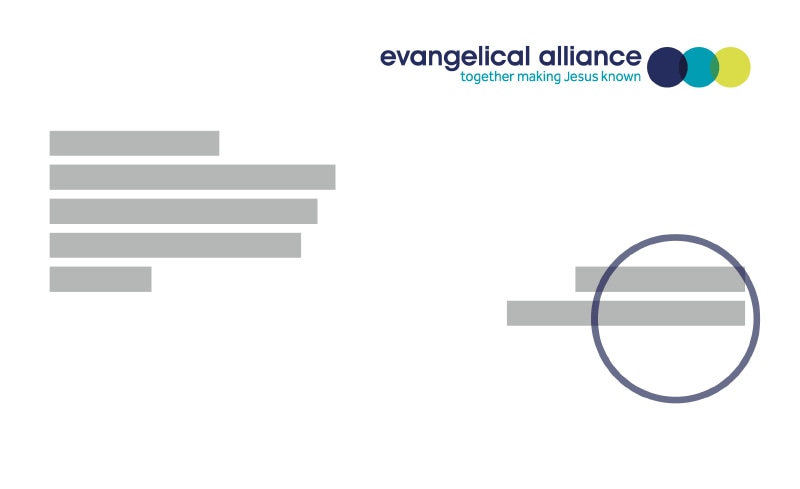The Government is introducing new regulations in England on Monday, 14 September which will limit indoor and outdoor social gatherings in private premises, churches or other venues to six people.
There are a number of places where more than six people can attend at the same time, and this includes places of worship. Therefore, church services can go ahead as long as they operate according to the Government’s guidance, with social distancing maintained and other hygiene measures in place.
The primary exception to the ‘rule of six’ is for households or exclusive support bubbles that have more than six people. In these situations that group can gather together and attend venues together.
To understand how this rule will work, it is important to recognise the distinction between attending a place and socially interacting with other people. There are a number of contexts where more than six people can attend at the same time: this could be at church, in a restaurant, at the cinema, or in a shop. Following the change, those attending these places must not socially interact in groups larger than six people. When interacting in these groups social distancing should be maintained between people from different households.
What is the impact on church services?
Church services can go ahead in the same manner that has been permitted since 4 July; as long as a risk assessment and social distancing and hygiene measures are in place, services can continue. There is no maximum limit on the number of people who may attend – this is subject to the capacity of the building. Congregational singing is strongly discouraged, however, and those singing from the front should take mitigating measures such as the use of a screen.
Currently, churches are encouraged to record who is attending services so that this can support the track and trace system. Following the announcement of changes from 14 September, it will be mandatory for all hospitality venues to record this information; however, it is not clear at this stage whether this compulsion extends to churches. We would strongly advise churches to record this information.
The primary impact of the changes will be on what happens before, after and within the service between members of the congregation. You must not attend in groups larger than six unless everyone is from the same household or support bubble and government advice is to limit your interaction to the group you are attending with. Within these groups, while interaction may take place, social distancing between different households should be maintained. This means that up to six people may arrive together, or go to the park together after the service, but not interact with other people while at church.
Theoretically you could form different groups of six people at different points; however, this would not be in keeping with the intent of reducing social interaction between households.
What does this mean for meeting in homes?
Until 14 September only a maximum of two households should meet together indoors. The changes that come into force next week mean that this is actually more permissive and provides some further scope for church meetings in private homes. Six people from any number of households will be permitted to meet together.
Two important things to bear in mind regarding this change: first, it is our expectation that this includes everyone in a house at that time. So, if a couple has two children, even if they are asleep upstairs, they can only have two further people in their house. We’re seeking clarification from the government on this and will update when we have more information.
The second aspect is that social distancing should be maintained between households, so if you have six people from six different households meeting in a living room you would need quite a lot of space.
A further consideration is to understand that these changes have been brought in both to clarify what is required, but also because infection rates are rising. It is therefore wise to limit the number of people meeting together in private homes. At this stage it is probably sensible for mid-week church groups to meet in church buildings where possible, as the density is likely to be lower and COVID-secure measures will be in place. If meeting in a church building, all those participating in a small group will need to wear a mask – the exemption is only for those leading services, for example teaching a Bible study group.
What does this mean for children’s and youth ministry?
Children’s and youth ministry are largely unaffected by this change: groups for children over five can meet in groups of up to 15, and there is no limit on the number of under-fives that can meet together.
This rule does affect informal childcare arrangements, as in these situations the total number of people who can be gathered is six, unless they are all from the same household or support bubble.
Children’s playgroups are also noted as exempt from the restriction on six people, but as with all settings social interaction should not occur beyond groups of six people.
What does this mean for other church activities and ministries?
Other ministries and activities that churches run can continue to operate as long as they do so within a COVID-secure framework and with appropriate social distancing and hygiene measures in place. This means that voluntary services such as foodbanks can operate with more than six people present, so can support groups such as bereavement or addiction recovery groups – as these are classed as charitable services.
In these settings social distancing should be maintained between different households and no more than six people can socially interact before, during or after the session. This might mean working out how discussions take place and may mean organising the session into smaller groups.



